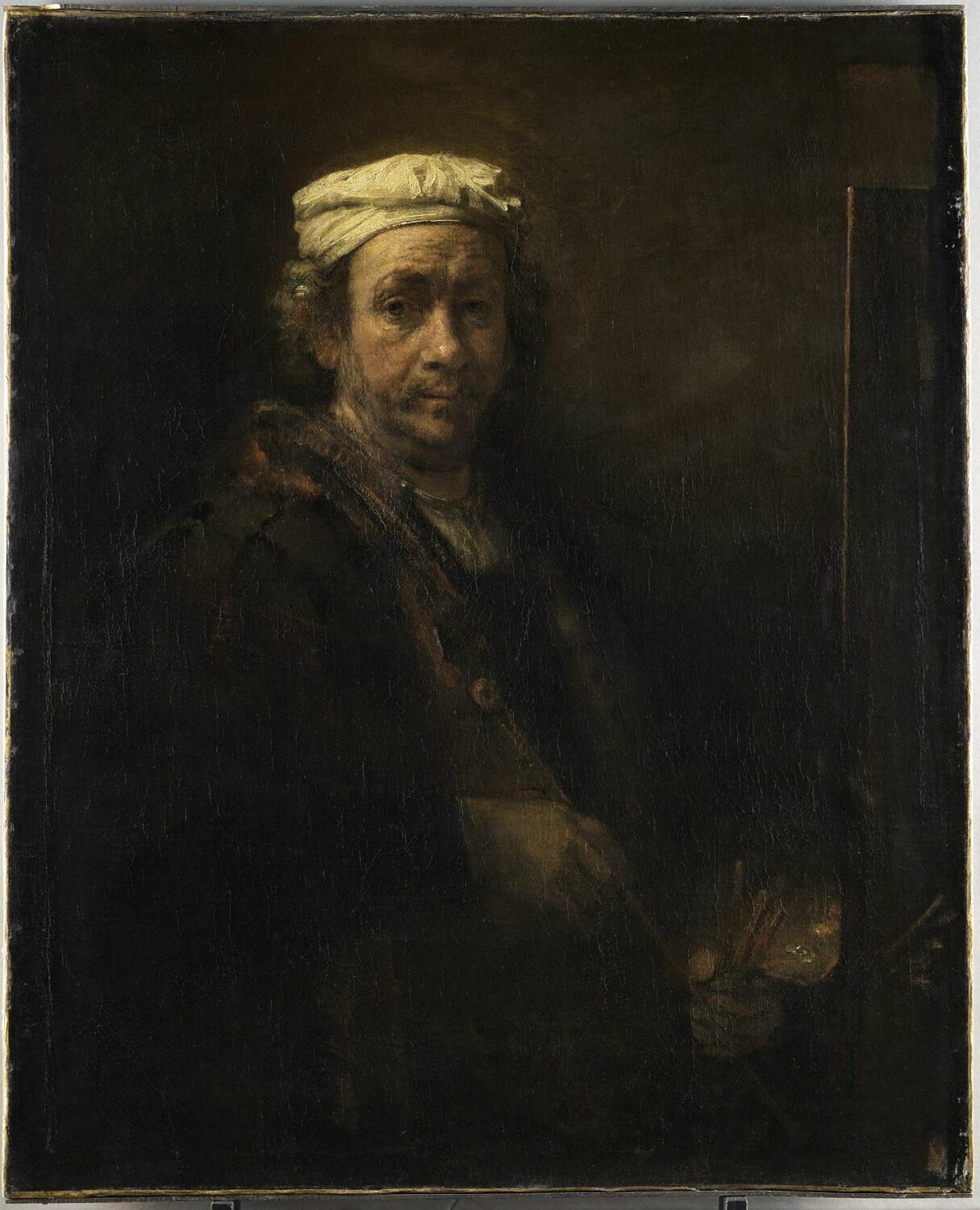Rembrandt’s Final Gaze: A Master’s Reflection in Shadow
Artist: Rembrandt van Rijn
Title: Self-Portrait (circa 1660s)
Medium: Oil on canvas
Period: Dutch Golden Age

Introduction
In this somber and introspective self-portrait, Rembrandt does not depict a heroic figure, nor a wealthy artist in flamboyant attire. He presents himself simply—wearing a white painter’s cap, gazing directly at the viewer. This work is not a performance, but a confrontation. It’s as if the aging artist is staring into the mirror, and we are privileged to witness that gaze.
The Weight of a Life Lived
By the time this painting was created, Rembrandt had suffered **bankruptcy**, **the loss of his wife and children**, and **social decline** in Amsterdam. Yet none of this appears with melodrama. Instead, he paints himself with honesty and dignity. His eyes do not plead for sympathy—they reflect a deep, almost philosophical weariness.
Light and Shadow: Mastery of Chiaroscuro
As with so many of his works, Rembrandt employs **chiaroscuro**—the dramatic contrast of light and shadow. His face emerges from the darkness with warm, diffused light, while the rest of the canvas dissolves into deep shadow. This not only enhances the intimacy of the portrait, but also symbolizes the **dualities of life**: presence and absence, clarity and mystery, being and fading.
Technique & Texture
One of the most remarkable qualities of this portrait is its **impasto** technique—the thick, expressive brushstrokes, especially around the forehead, cheeks, and hands. Rembrandt was not concerned with idealized realism. Instead, he prioritized **truthful representation**—the texture of aging skin, the sagging under the eyes, the coarseness of flesh.
The Artist as Subject and Soul
Unlike the fashionable self-portraits of court painters or baroque masters, this portrait is introspective, raw, and unflinchingly real. Rembrandt was not painting himself to please others—he was painting to understand himself.
“A portrait is not a likeness. The moment an emotion or fact is transformed into a photograph it is no longer a fact but an opinion.” — Richard Avedon
While this is said about photography, it holds true for Rembrandt’s self-portraits: they are less concerned with outer facts and more with inner truth.
Conclusion
This late self-portrait is more than an image of a man. It is a visual autobiography. In it, we see the **decline of physical vigor**, but also the **refinement of emotional insight**. In a world obsessed with surface and spectacle, Rembrandt offers an eternal lesson: that the soul, even in shadow, can shine.
